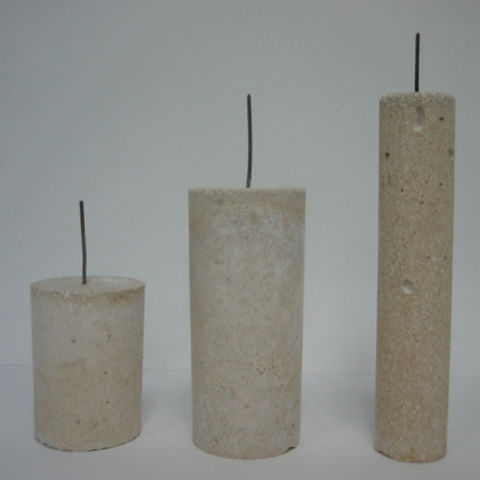
Sika® Galvashield® CC
Alkali-Activated (Type 2A) Embedded Galvanic Anodes for Corrosion Control in Reinforced Concrete Structures
Sika® Galvashield® CC embedded Type 2A (alkali-activated) galvanic anodes are used to mitigate ongoing corrosion and to prevent the initiation of new corrosion activity in sound reinforced concrete structures. The anodes consist of a high purity zinc anode core that is surrounded by a specially formulated precast cementitious mortar with an internal pH >14, keeping the zinc active over the life of the anode. Sika® Galvashield® CC anodes are available in three sizes to fit any structure and level of protection. The cylindical anodes are quickly and easily installed into drilled holes in concrete that is mechanically sound but has ongoing corrosion activity. Once installed, the zinc anode corrodes preferentially to protect the adjacent reinforcing steel.
- Proven technology: extensive 20-year track record, supported by independent test program.
- Focused protection: provides localised corrosion protection in areas with high corrosion potential or active corrosion.
- Economical: low cost method by targeting only the remaining areas of high corrosive risk; protecting local areas that are chloride contaminated but sound, thereby reducing concrete breakout.
- Versatile: effective in chloride-contaminated and carbonated concrete. Can be used for both conventionally reinforced and prestressed or post-tensioned concrete.
- User friendly: installation is quick and easy.
- Low maintenance: requires no external power source or system monitoring.
- Measurable performance: anode performance can be easily monitored if required.
- Long lasting: minimum 20-year anode service life* when using standard design tables; reducing the need for future repairs.
- Full system: can be used in conjunction with Sika® MonoTop®, FerroGard®, Margel and / or Sikagard® technologies to offer a full corrosion management system.
